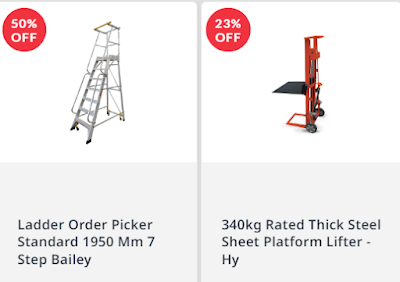The Essential Guide to Material Handling: A Comprehensive Overview
Material handling is a fundamental aspect of almost every industry, from manufacturing and logistics to construction and healthcare. Efficient material handling can significantly impact productivity, safety, and cost-effectiveness in these sectors. In this comprehensive guide, we will explain the world of material handling, exploring its importance, key principles, equipment from reflexquip.com.au, and best practices to help businesses optimize their processes.
Material Handling Equipment
Material handling equipment plays a pivotal role in enhancing efficiency and safety across industries, enabling seamless movement, storage, and protection of materials, ultimately boosting productivity and reducing operational costs. These specialized tools and machines are indispensable in modern manufacturing and logistics, streamlining processes and ensuring the timely delivery of goods to meet customer demands.
1. Conveyors: Conveyor systems are widely used for transporting materials within a facility. They come in various types, including roller, belt, and chain conveyors, and can be customized to suit specific needs.
2. Forklifts: Forklifts are indispensable in warehouses and distribution centers for lifting, moving, and stacking palletized goods. Different types of forklifts are available, such as counterbalance, reach, and pallet jacks.
3. Automated Guided Vehicles (AGVs): AGVs are autonomous vehicles used for transporting materials in factories and warehouses. They follow predefined paths and can be equipped with various attachments for different tasks.
4. Cranes: Cranes are essential for lifting and moving heavy loads in construction, manufacturing, and shipping. Overhead cranes, gantry cranes, and jib cranes are common types.
5. Palletizers: Palletizers automate the process of stacking products onto pallets. They are frequently used in manufacturing facilities to increase efficiency and reduce labor costs.
6. Rack Systems: Rack systems, including pallet racks and cantilever racks, provide organized storage solutions, maximizing the use of vertical space.
7. Robotics: Robotic systems are increasingly employed for material handling tasks, offering precision and flexibility in handling various products.
Understanding Material Handling
Material handling refers to the movement, storage, control, and protection of materials and products throughout the manufacturing, distribution, consumption, and disposal processes. Effective material handling is vital for streamlining operations, reducing waste, and enhancing workplace safety.
Key Principles of Material Handling
1. Ergonomics: Ensuring that workers' physical capabilities match the tasks they perform is essential. Ergonomic designs in equipment and workstations help prevent injuries and increase efficiency.
2. Flexibility: Material handling systems should be adaptable to accommodate changes in product types, production volumes, and facility layouts. This helps businesses remain agile in response to market fluctuations.
3. Efficiency: The primary goal of material handling is to reduce unnecessary movements, minimize waiting times, and optimize the flow of materials. This increases productivity and reduces operational costs.
4. Safety: Prioritizing safety is crucial. Proper training, equipment maintenance, and safety protocols can prevent accidents, injuries, and damage to materials.
Best Practices for Effective
Material Handling
1. Inventory Management: Implement a robust inventory management system to prevent overstocking or understocking of materials, reducing storage costs and improving efficiency.
2. Lean Principles: Adopt lean manufacturing principles to eliminate waste in material handling processes, such as excess movement, waiting times, and inventory.
3. Proper Training: Ensure that employees are adequately trained in using material handling equipment and following safety protocols.
4. Maintenance: Regularly inspect and maintain material handling equipment to prevent breakdowns and ensure optimal performance.
5. Space Optimization: Design facility layouts that maximize the use of available space, reducing the need for excessive material movement.
6. Use of Technology: Implement technologies like warehouse management systems (WMS), RFID tracking, and automated material handling systems to improve accuracy and efficiency.
7. Sustainability: Consider sustainability practices by reducing material waste, optimizing energy use, and exploring eco-friendly packaging solutions.
Conclusion
Material handling is a critical component of various industries, impacting efficiency, safety, and cost-effectiveness. By understanding the key principles, utilizing appropriate equipment, and implementing best practices, businesses can streamline their material handling processes, leading to improved productivity and profitability. Staying adaptable and embracing technology are key factors in meeting the challenges of modern material handling.




Comments
Post a Comment